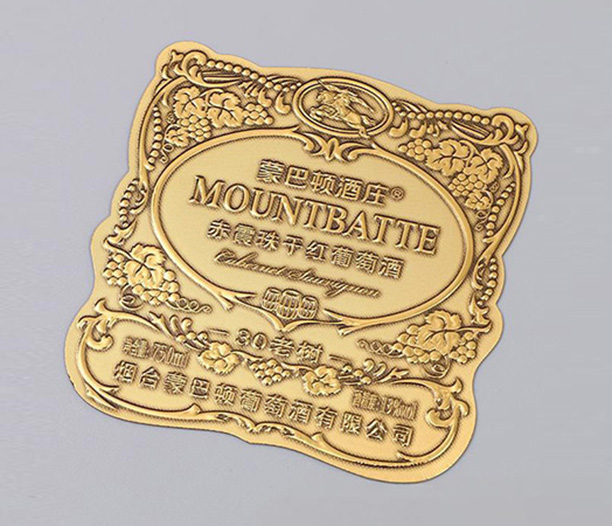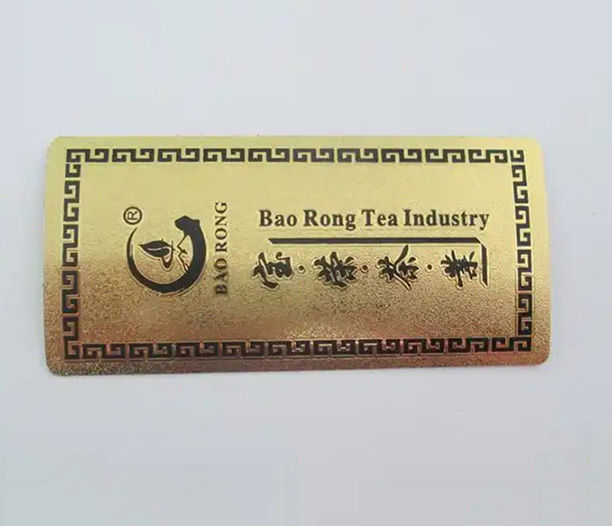In the world of industrial manufacturing, warehousing, and asset management, identification is everything. Labels for stainless steel are not just simple stickers; they are highly engineered products designed to withstand some of the most challenging environments imaginable. Whether it's enduring autoclave sterilization in a medical facility, resisting harsh chemicals in a laboratory, or braving outdoor weather on industrial equipment, the right label is critical for safety, compliance, and efficiency. This comprehensive guide delves deep into the universe of labels for stainless steel, exploring their various types, myriad applications, best practices for selection and application, and the common problems you might encounter. By understanding these crucial components, you can ensure your assets are clearly, permanently, and safely identified.

What Makes Labels for Stainless Steel Unique?
Stainless steel presents a unique challenge for adhesion. Its smooth, often non-porous, and sometimes greasy surface makes it difficult for standard adhesives to bond effectively. Furthermore, the environments where stainless steel is used—think food processing plants, medical sterilization units, or chemical labs—are notoriously harsh. Therefore, labels for stainless steel are specially crafted systems comprising three key elements:
Facestock: The material you print on. This must be durable and resistant to tears, abrasion, chemicals, and extreme temperatures. Common materials include polyester, polyimide, and vinyl.
Adhesive: The heart of the label. This is a specialty formula designed to create a powerful, permanent bond with the low-surface-energy of stainless steel. Adhesives are often acrylic or rubber-based and can be rated for high temperatures.
Liner: The backing paper that protects the adhesive until the moment of application.
The combination of these elements is what sets labels for stainless steel apart from ordinary labels, providing the durability and reliability required for industrial and commercial use.
Different Types of Labels for Stainless Steel and Their Applications
Not all stainless steel environments are created equal. Consequently, there are several types of labels for stainless steel designed for specific purposes.
Chemical-Resistant Labels
Description: These labels are constructed from materials like polyester or specially coated vinyl, with adhesives formulated to resist degradation from oils, solvents, acids, alkalis, and cleaning agents.
Applications: Ideal for laboratory equipment, chemical drums, pharmaceutical manufacturing, and parts that undergo frequent wash-downs with aggressive cleaners.
High-Temperature Labels
Description: Perhaps one of the most common specialized types, these labels for stainless steel are made from materials like polyimide (Kapton) or foil, which can withstand extreme heat without melting, discoloring, or losing adhesion. They are often rated for continuous exposure from 500°F (260°C) up to 2000°F (1093°C) for short bursts.
Applications: Essential for labeling components in automotive manufacturing (engine parts), aerospace, electronics (PCB identification), and industrial machinery that operates at high temperatures.
Ultra-Durable Polyester Labels
Description: Polyester is a workhorse material for industrial labeling. It offers excellent resistance to abrasion, tears, moisture, and many chemicals. These labels for stainless steel provide a great balance of durability and printability.
Applications: Asset tags, equipment nameplates, bar code labels for inventory tracking, and outdoor equipment labels.
Photoluminescent and Safety Labels
Description: These labels are designed for safety and visibility. Photoluminescent labels for stainless steel absorb and store light energy, then glow in the dark to identify emergency equipment, exits, or hazards. Other safety labels might feature bold colors and text for warnings.
Applications: Marking fire extinguishers, emergency shut-off valves, eyewash stations, and electrical panels in factories, schools, and public buildings.
Autoclave and Sterilization Labels
Description: A specific subset of high-temperature labels, these are designed to withstand the intense heat, pressure, and steam of autoclave and sterilization cycles without falling off or becoming unreadable.
Applications: Critically important in healthcare for identifying surgical instruments, trays, and medical devices that must be sterilized between uses.

How to Choose the Right Labels for Stainless Steel: A Buyer's Guide
Selecting the wrong label can lead to failed audits, safety issues, and lost productivity. Here are the key factors to consider:
Surface Condition: Is the steel perfectly smooth, brushed, or textured? Textured surfaces may require a thicker, more aggressive adhesive.
Environmental Exposure: Will the label face heat, chemicals, moisture, UV sunlight, or abrasion? Choose a material and adhesive rated for your specific combination of challenges.
Application Method: Will the labels be applied by hand or by a automated applicator? This affects the liner type (e.g., paper vs. PET) and the label's shape.
Duration: Is a permanent bond required, or do you need a removable label for temporary tracking?
Compliance Requirements: Does the label need to meet specific standards from organizations like UL, CSA, NSF, or the FDA for direct food contact?
Printing Needs: Will you be printing on-demand in-house? If so, consider laser-compatible or thermal transfer labels for the best results.
Best Practices for Applying Labels on Stainless Steel
A perfect label can fail if applied incorrectly. Follow these steps for optimal adhesion:
Surface Preparation: This is the most critical step. The surface must be completely clean, dry, and free of dust, oil, grease, and other contaminants. Use a high-quality isopropyl alcohol (IPA) wipe (70% or higher) and allow the surface to fully evaporate before application.
Application Temperature: Apply the label in an environment that is within the recommended temperature range, typically between 50°F and 90°F (10°C and 32°C). Avoid applying to surfaces that are hot or cold to the touch.
Firm Pressure: Once the label is positioned correctly, apply firm, consistent pressure across the entire surface, especially around the edges. Using a squeegee or a roller can help eliminate air bubbles and ensure full contact with the adhesive.
Cure Time: Many high-performance adhesives require a "cure time" to reach their ultimate bond strength. Avoid exposing the label to harsh conditions for the first 24-72 hours after application if possible.
Common Problems and Solutions with Labels for Stainless Steel
Even with the best products, issues can arise. Here’s how to troubleshoot common problems.
Problem: Label Lifting or Peeling
Causes: The primary cause is improper surface preparation. Oils from skin (fingerprints) or manufacturing residues prevent the adhesive from bonding. It can also be caused by applying to a surface that is too cold, choosing an adhesive not rated for the environment, or applying on a textured surface without the right adhesive.
Solutions: Re-clean the surface thoroughly with IPA. Ensure the adhesive type is appropriate (e.g., a high-tack adhesive for textured steel). Apply at room temperature.
Problem: Label Edges Curling or Failing First
Causes: This is often due to abrasion, chemical exposure creeping under the edge, or an initial application that didn't secure the edges properly.
Solutions: Choose a label with a stronger, more chemical-resistant adhesive. Ensure firm pressure is applied to all edges during application. Consider a label with a clear overlaminate to seal the edges.
Problem: Print Smudging or Fading
Causes: Using an incompatible printing method (e.g., an inkjet label in a wet environment) or a facestock material that isn't rated for the exposure (e.g., UV light fading standard prints).
Solutions: For harsh environments, use thermal transfer printing with a resin-based ribbon, which offers superior durability. For outdoor use, ensure the label material is UV-resistant.
Problem: Adhesive Residue Upon Removal
Causes: While most labels for stainless steel are designed to be permanent, some situations require removal. Strong adhesives can leave behind a stubborn residue.
Solutions: Use a specialized adhesive remover or citrus-based cleaner. Apply, let it soak to break down the adhesive, and then gently scrape it off with a plastic scraper to avoid scratching the steel.
Problem: Bubbles Under the Label
Causes: Trapped air during application, often from applying too quickly or unevenly.
Solutions: Slowly apply the label from one edge to the other, using a squeegee to smooth it out as you go. If a bubble is trapped, you can sometimes pierce it with a fine pin and smooth it down.
The Future of Labels for Stainless Steel
The industry continues to innovate. Future trends include:
RFID Integration: Embedding RFID chips into durable labels for stainless steel for automated, long-range tracking of assets without a direct line of sight.
Smart Labels: Labels with sensors that can monitor and record data like temperature exposure or shock, providing an immutable history for sensitive shipments.
Even More Durable Materials: Ongoing development of new polymers and adhesive chemistries to push the boundaries of temperature and chemical resistance even further.
Choosing and using the right labels for stainless steel is a science that directly impacts operational efficiency, safety, and compliance. By understanding the different types available, carefully considering your application's requirements, following best practices for surface preparation and application, and knowing how to troubleshoot common issues, you can ensure your labels perform flawlessly for the long haul. Investing time in selecting the correct identification solution will save significant time, money, and hassle down the line, making these small but mighty tools a critical component of any industrial or commercial operation.






